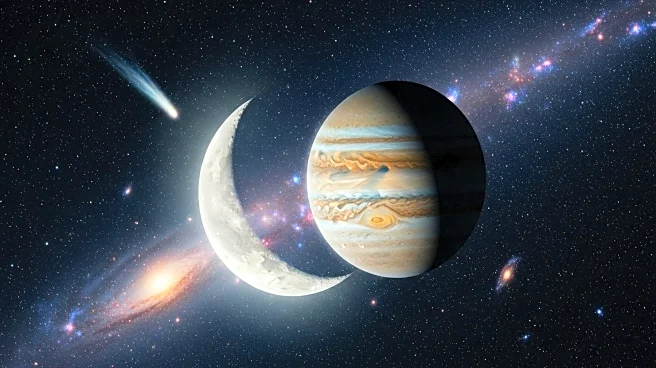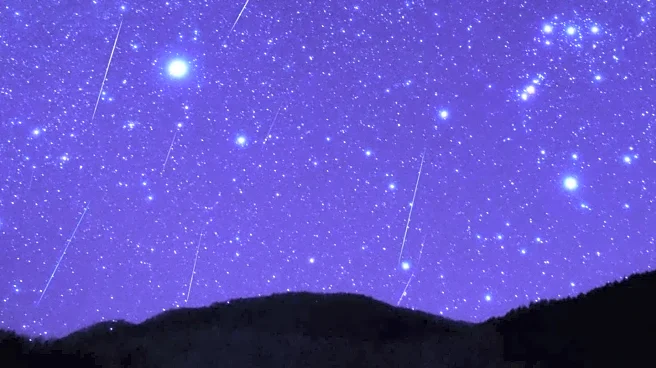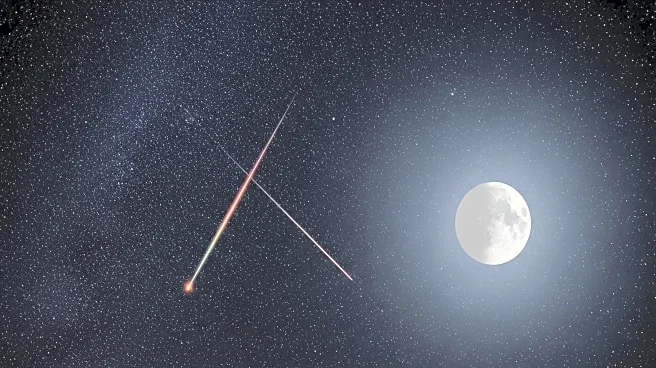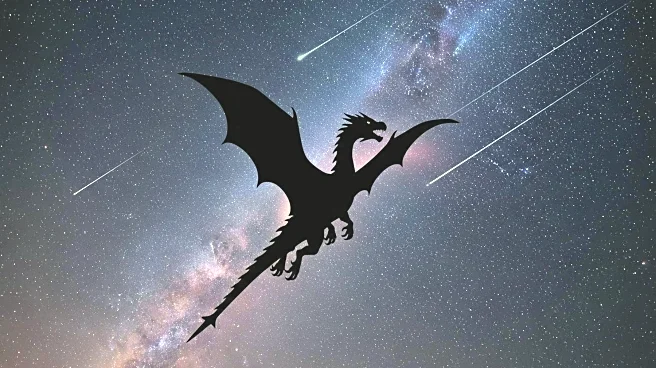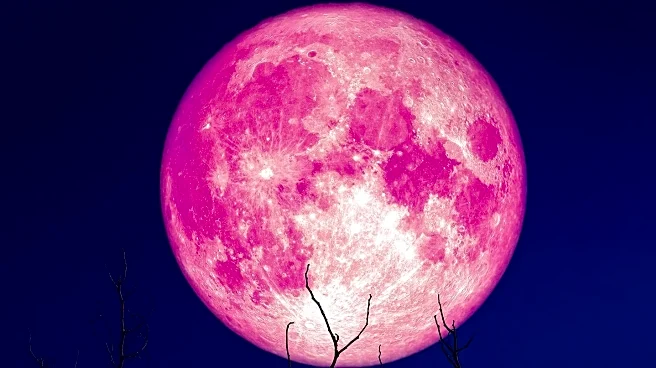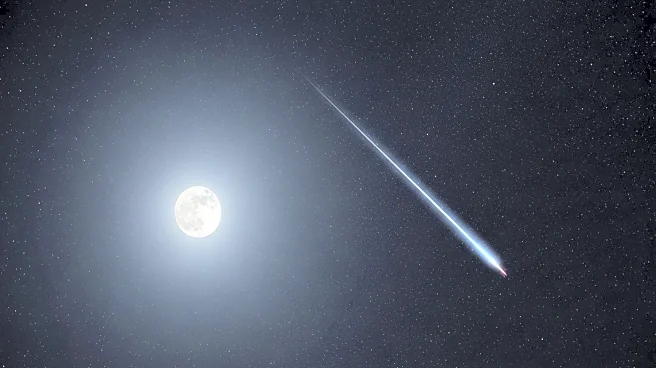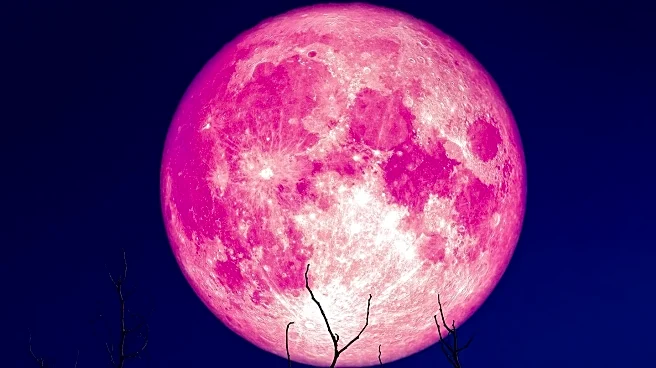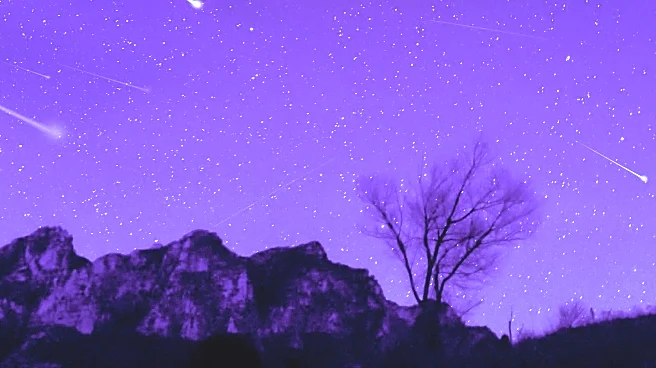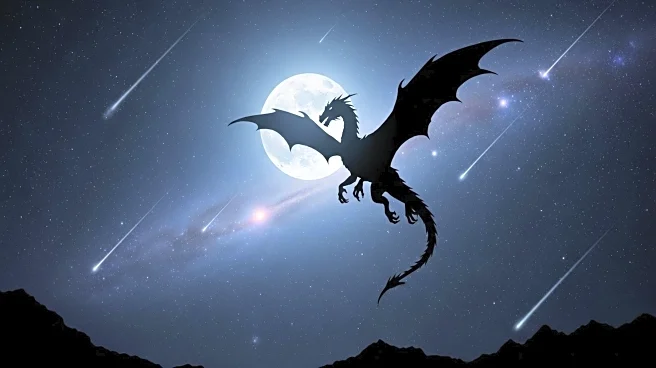What's Happening?
The Orionid meteor shower is anticipated to peak on the morning of October 22, 2025. The radiant of the shower is located at the top of Orion's club, providing a clear view for observers. The sky will be free of moonlight during this period, offering optimal conditions for viewing the meteor shower. This event is part of a series of astronomical occurrences detailed in the October edition of Sky & Telescope magazine, which also highlights other celestial events such as Jupiter's double shadow transits and the visibility of various constellations and planets.
Why It's Important?
Meteor showers like the Orionids offer a unique opportunity for both amateur and professional astronomers to observe celestial phenomena. The absence of moonlight during the peak enhances visibility, making it an ideal time for stargazing and astrophotography. Such events can increase public interest in astronomy and science, potentially inspiring educational activities and community events centered around skywatching. Additionally, these occurrences contribute to scientific research, as they allow astronomers to study the composition and behavior of meteors entering Earth's atmosphere.
What's Next?
As the Orionid meteor shower approaches its peak, astronomers and enthusiasts are likely to prepare for observation sessions. This may include organizing public viewing events or educational workshops to engage the community. The event could also prompt discussions among scientists regarding the origins and characteristics of the meteors. Following the peak, attention may shift to other upcoming astronomical events, such as the visibility of planets and constellations, as detailed in the Sky & Telescope magazine.
Beyond the Headlines
Meteor showers like the Orionids can have cultural significance, often associated with myths and folklore across different societies. They also serve as a reminder of the vastness and complexity of the universe, encouraging philosophical and existential reflections. The event may also highlight the importance of preserving dark skies, as light pollution can significantly impact the visibility of such celestial phenomena.

